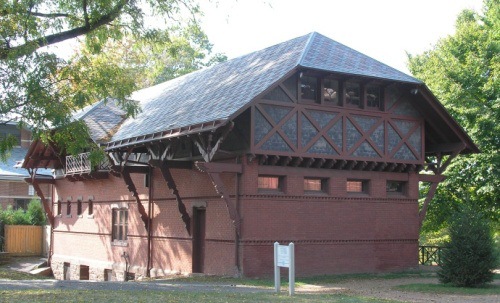Buildings last a long time. Within their forms are embedded the cultural assumptions of the time of their creation. Just thinking about those avocado green kitchen appliances from my youth makes me cringe! And what about those knotty pine kitchen cabinets or basement “rec rooms” with their “formica” bars.
So I’ve been thinking about that lovable building form: the Carriage House. I’ve been thinking about them because there were some really wonderful ones built in the Victorian era. Little did they know that a new energy future (oil) and form of transportation (automobiles) would render their purpose obsolete.

Its interesting now to contemplate the period when the carriage, and its house, became redundant. That was a big change with huge cultural implications. Fortunately they fit those new cars pretty well. Fortunately – especially for people in Hartford’s West End where you can find many still existing – the living quarters above made useful small apartments.
We’re facing a similar transition now. We built our homes on the presumption of cheap energy and the ability to use it without consequences. That’s changed. We’re nearing the end of cheap energy. And we’re realizing that what we’ve been using is having a grave impact on our planet, and along the way threatening the foundation of our economy.
So whither all these homes built to run on cheap energy, and the carriage house for that matter. Well for starters, it turns out that the charming carriage house is just about the right size and shape for the kind of home that we like to call “future friendly”. Not too big. Not too complicated.
Maybe we can learn a thing – or two – from this artifact of another significant energy transition.
